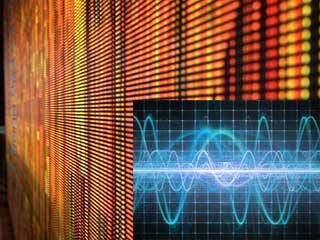LED Screens and Electromagnetic Interference
Our magazine has already written about the electromagnetic interference of LED screens:
- LED Screen Electromagnetic Interference and FCC
- Modern LED Screens: Characteristics, Technologies, Reasons to Choose

Recently, the authorities of different countries, as if having agreed, toughened the legislative requirements for observing the set of rules in many areas of economic, industrial and public activities, which had not been strictly observed before.
Currently, more than 20 thousand various standards, rules and procedures have been developed, but not all are mandatory for execution. But there comes a time when, for reasons that are not named, the authorities urge offenders to fully comply with the rules.
This is exactly what happened in the US, when the Federal Communications Commission (FCC) stated that it was necessary to comply with the rules for all equipment that needed certain radio frequencies to be allocated. And in the event that the issuing equipment violates these rules, the offender will be severely punished, both financially and administratively.
Especially strictly the US authorities reacted to the manufacturers of LED screens. The FCC announced truly draconian measures: fines from 15 to 60 thousand dollars for each installed screen that exceeds admissible radiation level. Bearing in mind that recently the prices for the LED screens themselves have dropped significantly, such a penalty may amount to almost the cost of the screen itself. It is cheaper not to defy the law.
However, not so much the magnitude of the penalty is terrible, as the accompanying administrative measures against those caught on the violation. Among them, public notification of committed offenses, which leads to a significant impact on reputation; a recall from the market of all devices of this manufacturer until the issue is fully resolved with the authorities; the withdrawal of previously issued certificates and the ban on the sale of this equipment in the United States.
In the LED screens, there are a lot of parts with potential violations of electromagnetic interference: numerous power supplies and LED drivers IC, used in thousands, and kilometers of unshielded wires. As a result, the LED screen can cause interference to television or mobile telephony in the immediate vicinity of the screen. Even worse, if the interference from the LED screen overlap with the official frequencies of the police or other public services.
Unfortunately, in Russia there is no central control over interference in public areas. It is clear that the owners of the screens receive from the manufacturers certificates of electromagnetic compatibility. But what kind of documents the manufacturer will not "draw", in the hope of a selling an expensive product.
Some time ago in Moscow, the authorities changed the rules for installing outdoor advertising. According to the new rules of the Department of Advertising and Media in Moscow, LED rack media facades with a degree of transparency of not less than 2/3 of the covered area are allowed. But it turned out that the media facades from Chinese manufacturers frequently have electromagnetic interference even higher than on stand-alone panel screens.
Although it would be logical for the Ministry of Communications to control industrial interference, for some reason, the control of media facades with a high level of radiation fell into the field of activity of the government communications service FSO (Federal Security Service of the Russian Federation). The bottom line is that often media facades are located on the main highways, which are simultaneously the routes of the first persons of the state, and such media facades clog up the government communication. Accordingly, the owners of such media facades come with instructions to turn off the equipment or even dismantle it.
It is possible to fight with a high level of radiation, but this leads to a rise in the cost of systems. But people do not like overspending, as we see, not only in Russia, but also in the United States.





